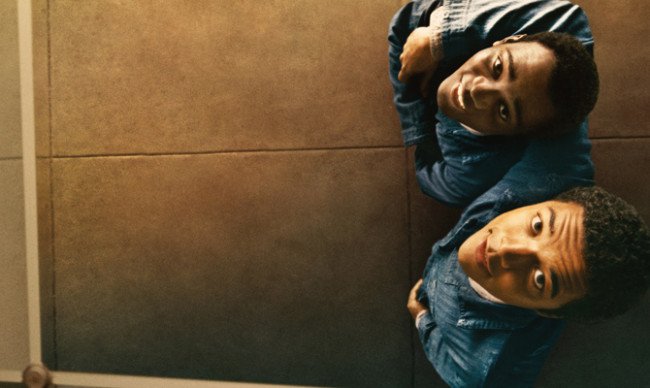Nickel Boys (3 stars out of 4)
Some movies will be remembered for their concept more than their content. Think, “The Blair Witch Project” or this year’s “Here.” “Nickel Boys” has some striking and memorable content, but the power of that content is filtered through a concept that will make or break most viewer’s experience with the film.
Ramell Ross’s film is an adaptation of a book by Colson Whitehead, which follows the experiences of two black teens in a Florida reform school in the Civil Rights Era 1960s. Aside from a few intercuts of historical footage from the period, including images of the Apollo space project, almost all of “Nickel Boys” is shot from the point of view of one of these two main characters.
We spend most of our time viewing the world through the eyes of Elwood (Ethan Herisse), who arrives in Nickel after hitching a ride in what turns out to be a stolen vehicle. We know the most about his life, and see numerous interactions with his grandmother Hattie (Aunjanue Ellis-Taylor).
After some time in Nickel, Elwood befriends Turner (Brandon Wilson), a kindred spirit and fellow “student.” Where Elwood retains hope for a better life after his release, Turner fears for the worst, and objects to Elwood’s efforts to document the abuses and illegal goings-on at the school.
Partway through the film, Ross begins to intercut flash-forward scenes from years after Elwood’s eventual release. For these shots, rather than a direct POV, Ross places the camera behind the actor’s head, which accomplishes a similar purpose.
As you might imagine, the POV focus puts creative limitations on what “Nickel Boys” can show us. The experience isn’t quite claustrophobic, and it does lead to some creative cinematography and impact. But it also slows down a film that already has to negotiate a fairly low-key plot, and there seem to be as many downsides to the concept as positives.
The reality of Elwood and Turner’s situation at Nickel, a microcosm of the segregation experience in general, comes through in vivid tones, but it’s hard to say whether that impact is magnified by the camera work. One move that feels unnecessary is a late plot twist that feels out of place, almost a gimmick, given the serious tone and message of the film.
The sum total of “Nickel Boys,” then, will largely vary by audience. The more obvious elements of the film—mainly the powerful depiction of 1960s racial injustice in the south—will be universal. The total experience, thanks to the camerawork, may be more divisive.
“Nickel Boys” is rated PG-13 for scattered violence and profanity, as well as some frightening scenes.

